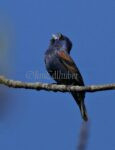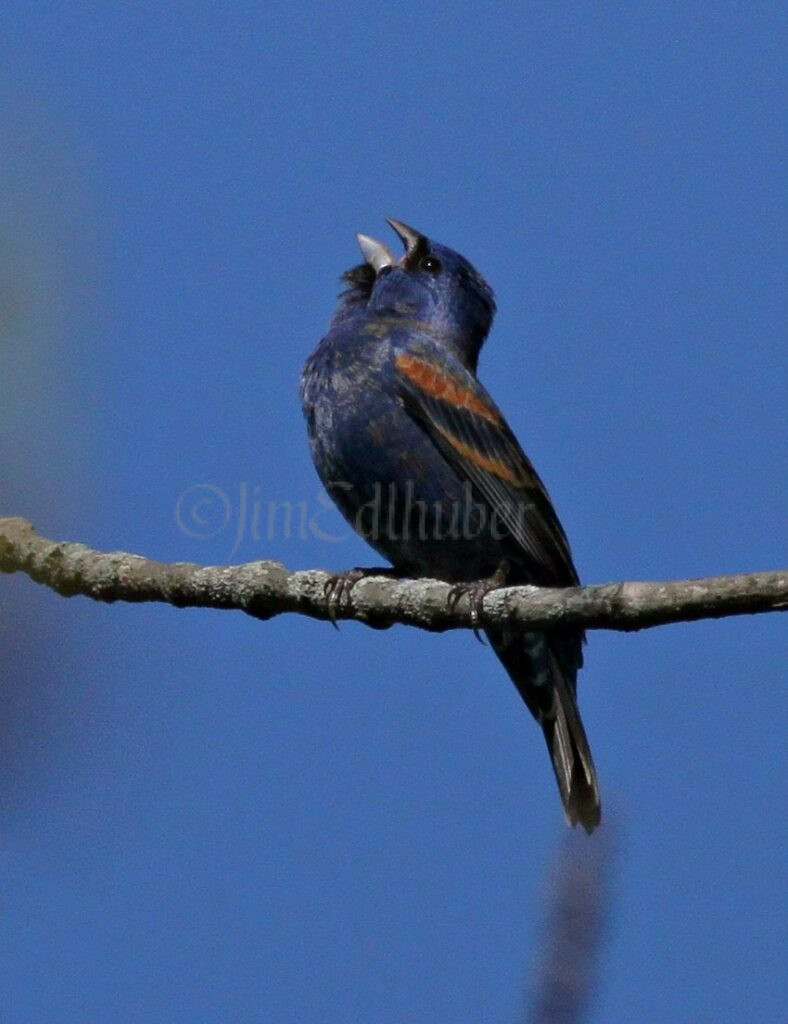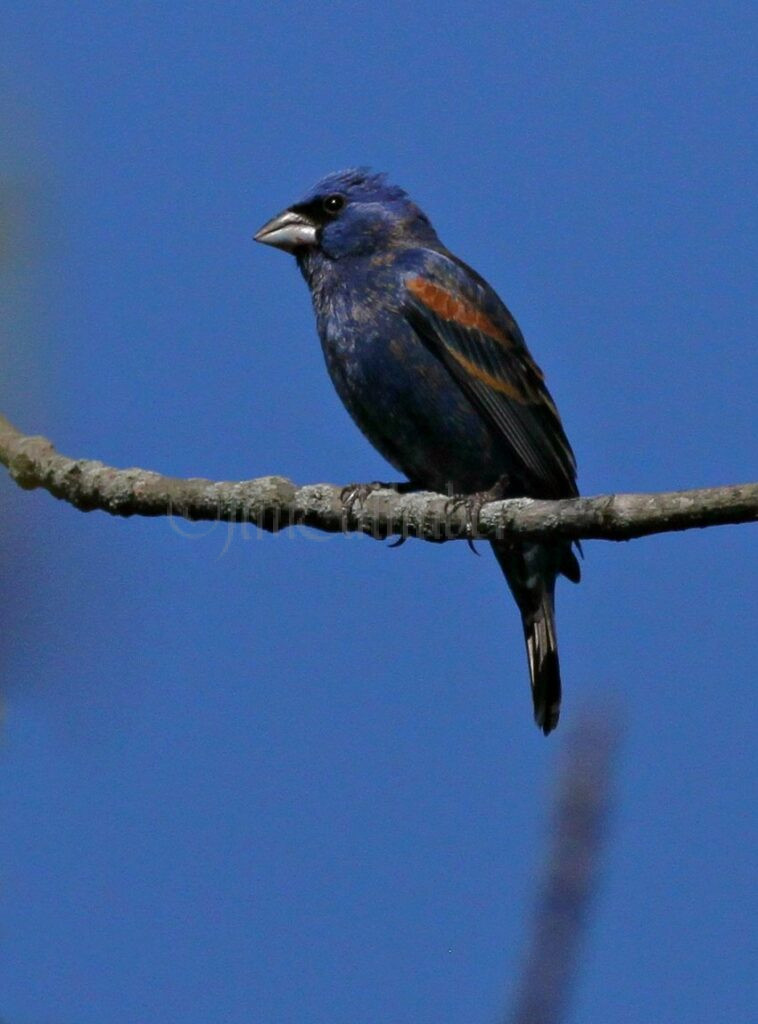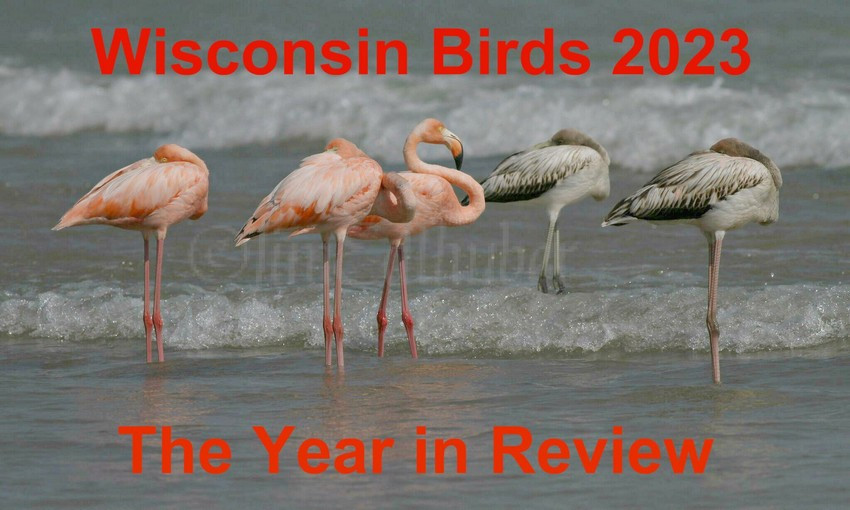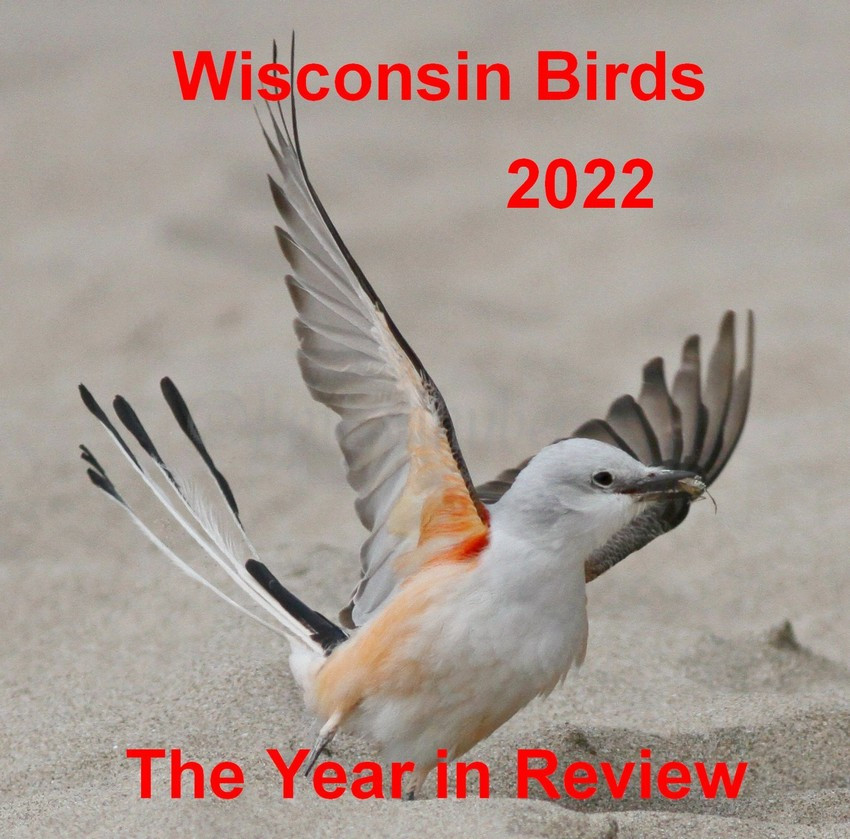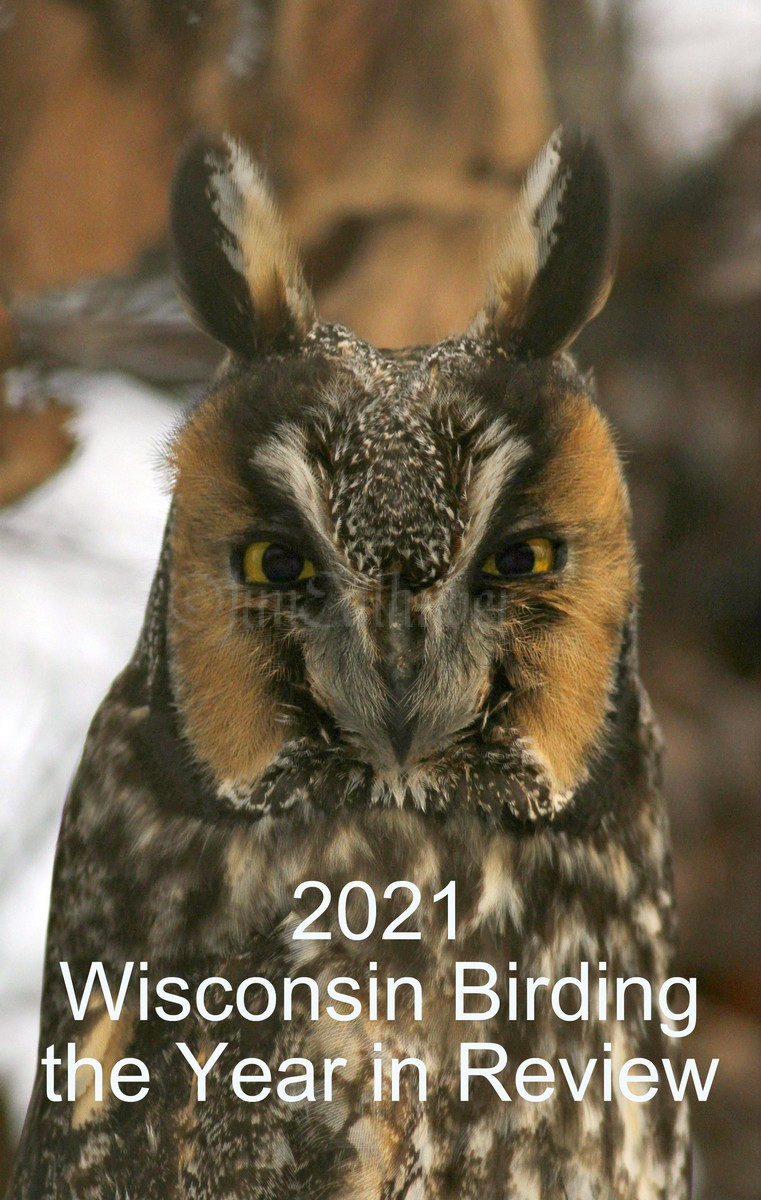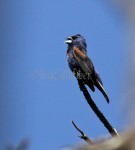
I made the run up to the Spring Green Preserve-west SNA in Sauk County Wisconsin with hopes to see the beautiful Blue Grosbeak and get a life bird too. This uncommon bird for the state has been reported on and off all summer long at this location. I was not let down as it only took a few minutes to locate this bird by its distinct call. I viewed it multiple times on top of the tall white pines running east. I also viewed the bird from a distance on the short oaks northeast of the Pearl Road dead end. A few other birds to note were Eastern Towhee’s, Indigo Buntings, 1st summer male and female Baltimore Orioles which I thought they were Chats with the early morning sun hitting them had gold color like I never saw before. Images were taken on August 9, 2014.
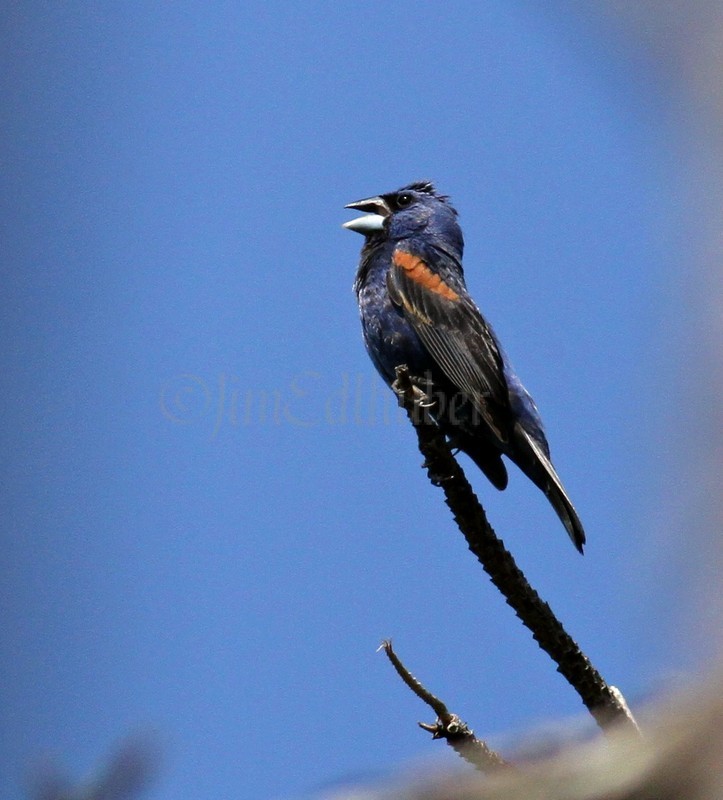
Blue Grosbeak, male
Blue Grosbeak
Binomial name: Passerina caerulea
Category: Cardinals, Piranga Tanagers and Allies
Size: 6.75” long, 11” wing span
Weight: 0.98 Oz.
Habitat: Open forests and shrub habitats of south North America. These areas can be corridors, hedgerows, old fields, logged areas, power line right-of-ways, some savanna areas, forest edges, pine forests in the south. Blue Grosbeaks typically migrate south into Mexico and Central America and as far south as central Panama. Normal range for this bird is south of Wisconsin.
Diet: Insects, sometimes seeds from grains.
Nesting: Females typically build the nest, the males help on occasion. The nest is cup shaped 2-3” across built with materials such as twigs, bark material, cotton, leaves, rags, snake skin, plant material and newspapers. Nests are usually located in open areas, along roads and woodland edges. 3-5 eggs are laid with incubation of 12-13 days.
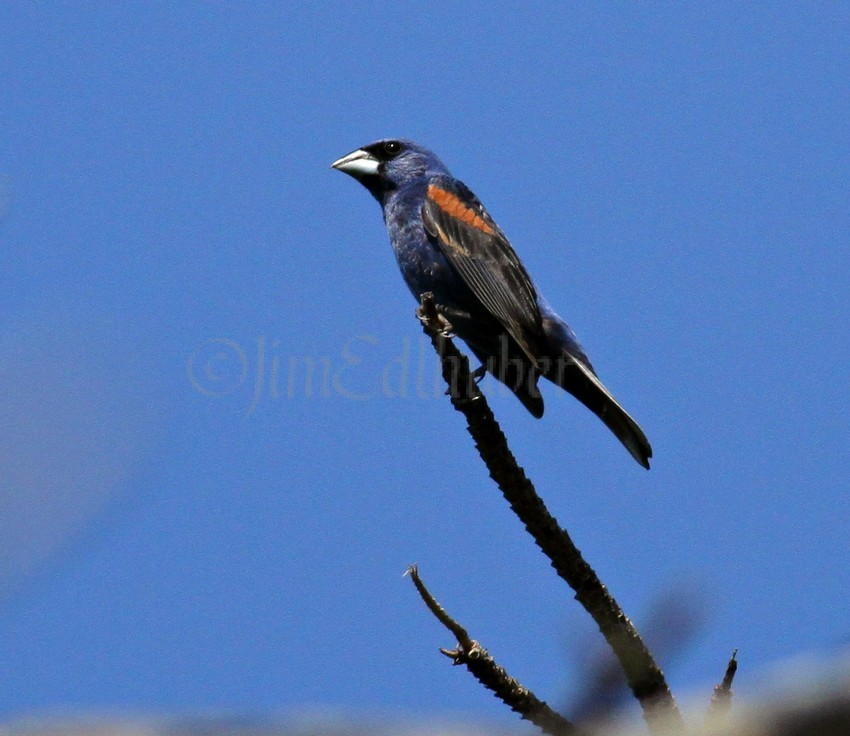
Blue Grosbeak, male
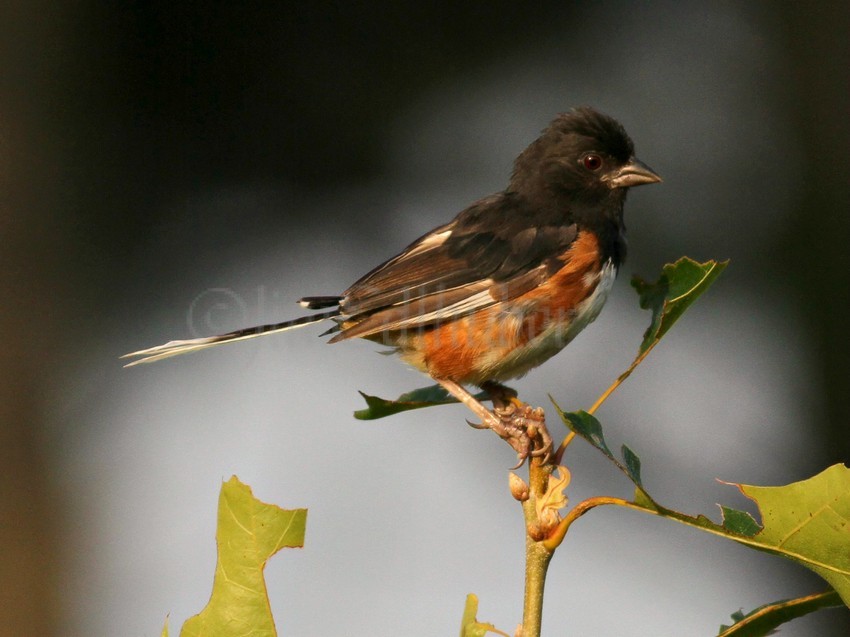
Eastern Towhee, female
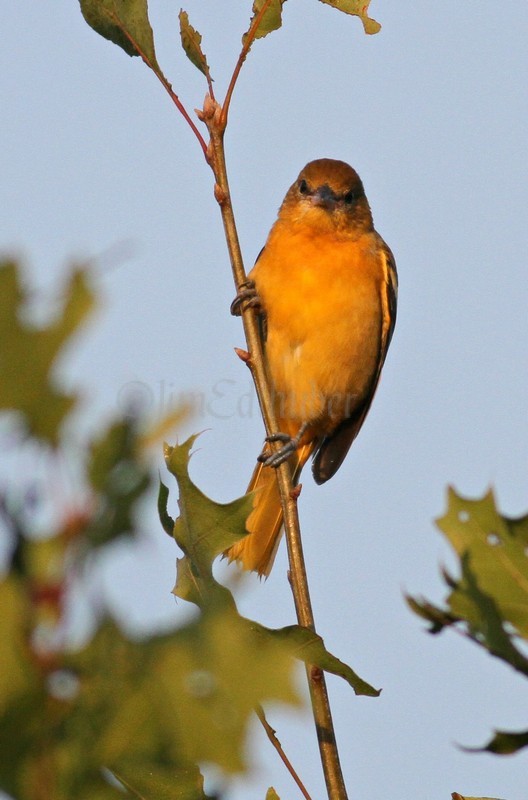
Baltimore Oriole, 1st fall male
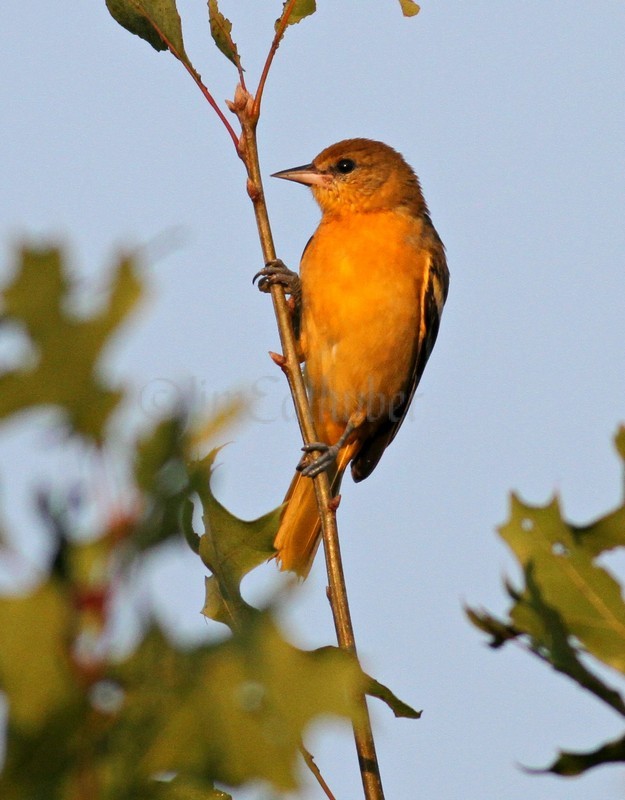
Baltimore Oriole, 1st fall male
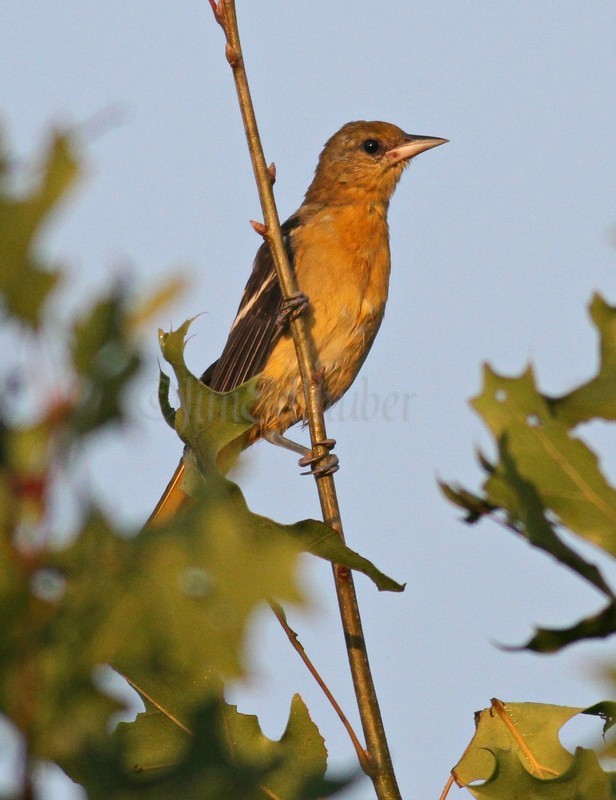
Baltimore Oriole, 1st fall female
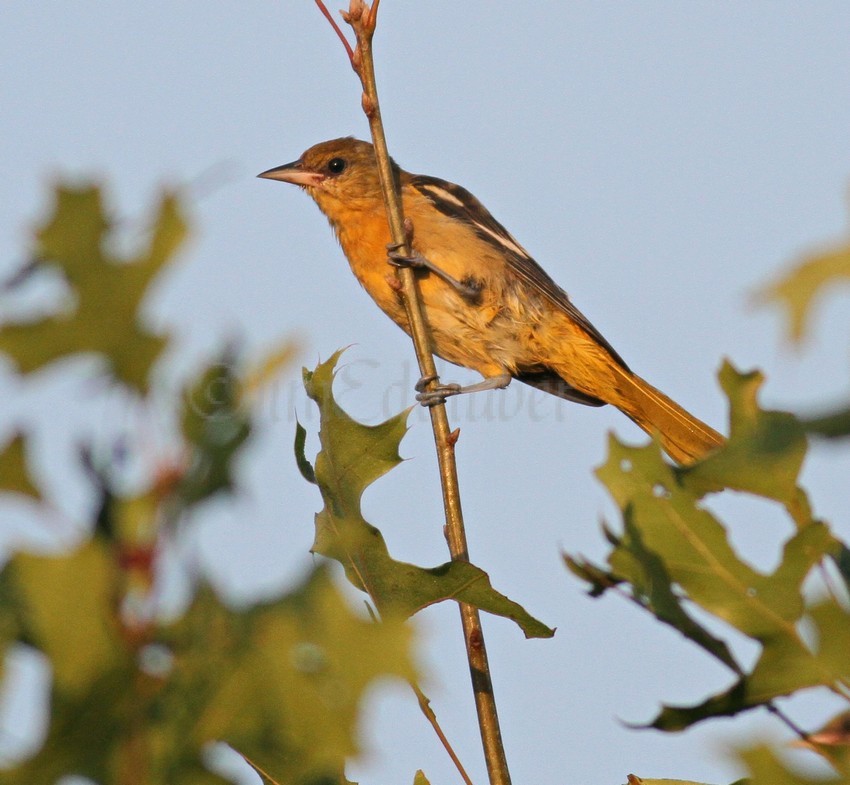
Baltimore Oriole, 1st fall female
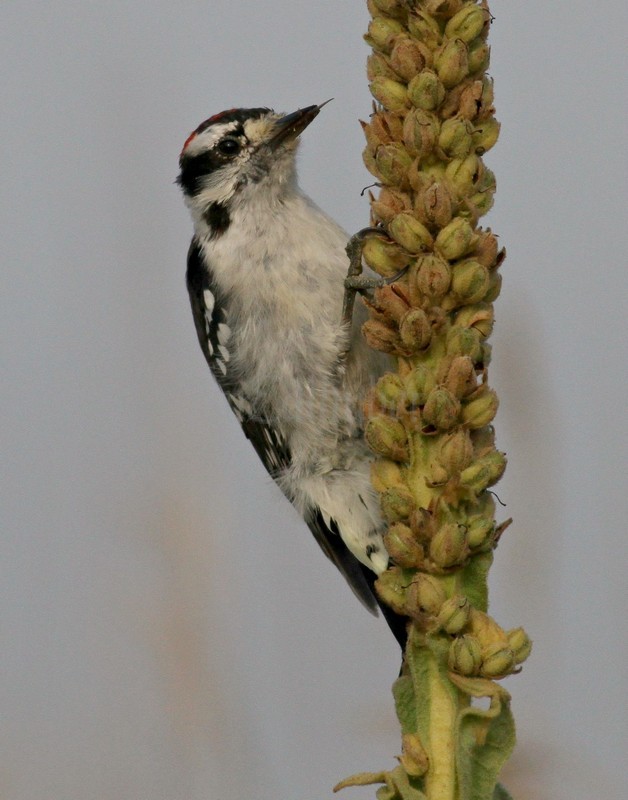
Downy Woodpecker, male
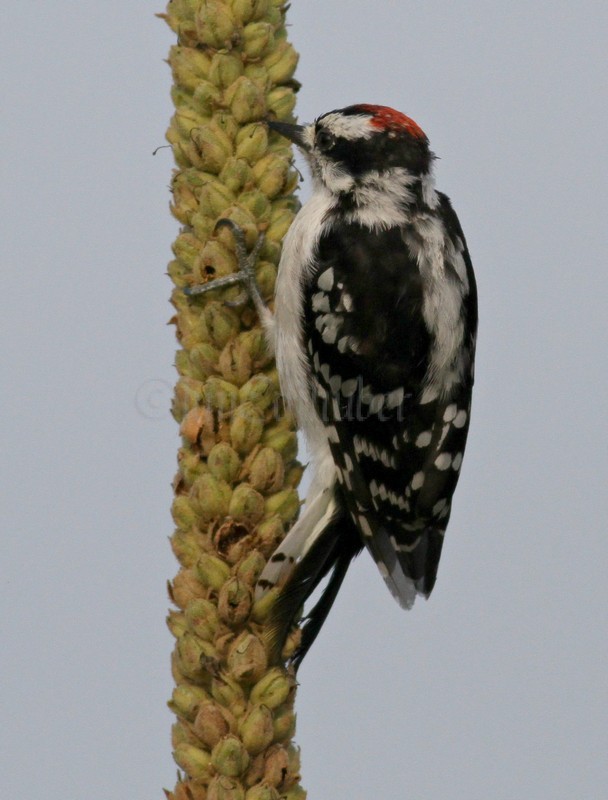
Downy Woodpecker, male
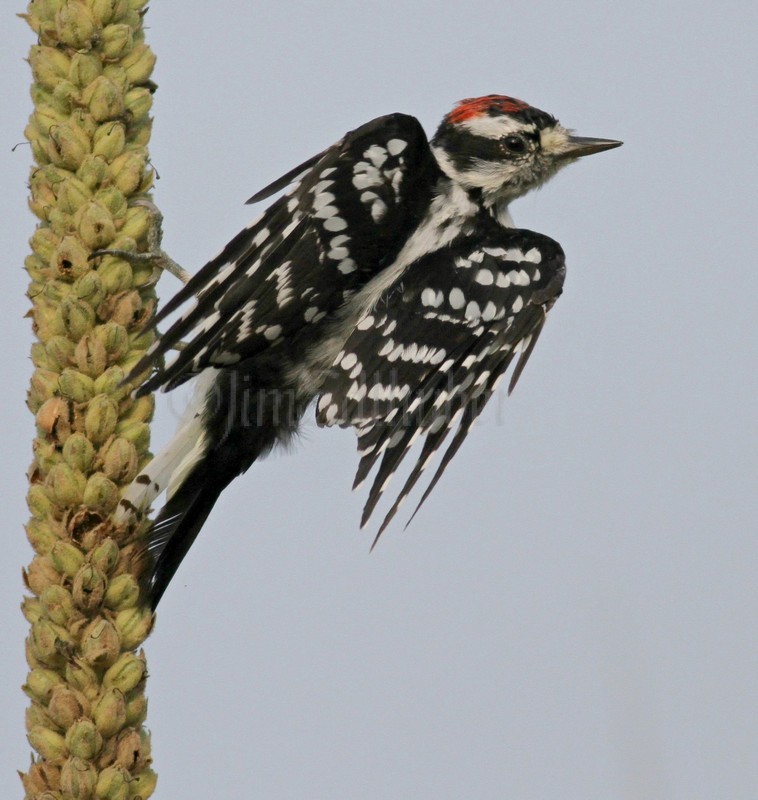
Downy Woodpecker, male
